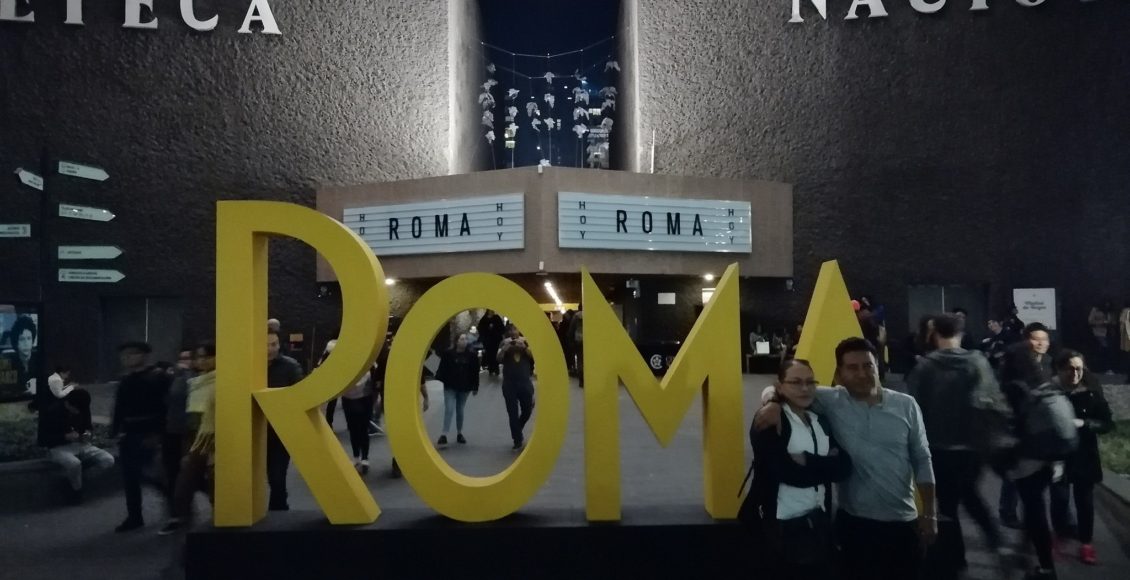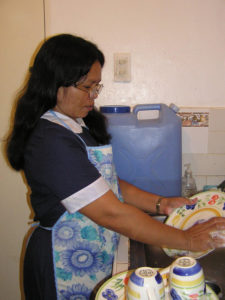A Closer Look at Latin America’s ‘Culture of Violence’ through the Lens of Roma
 sdr
sdr
Recently, the Mexican movie Roma made international headlines when indigenous actress Yaritza Aparicio appeared on the cover of Vogue Mexico. Despite this being a big moment for Mexico on the international stage, this was an even bigger moment for Aparicio who became the first openly indigenous women to make the cover of Vogue. Her appearance brings recognition to a traditionally marginalized, yet substantial, indigenous population of 10 million in a country where light skinned and passing meztizos are continually portrayed as the normalized citizen. On a global note, it specifically recognizes the presence of indigenous communities in mainstream media, which often negates or intermixes their presence through the concept of multiculturalism.
For most, multiculturalism is perceived as a positive social policy that promotes diversity. Multiculturalism, however, is a violent means of political capital that allows states to stake a claim in this diversity internationally, while placing clear limitations on its tolerance nationally. In understanding this reality, it is important to highlight that marginalization is a common form of violence. While Aparicio’s appearance is likely to be capitalized on by the Mexican state, she is taking control of this narrative by actively promoting her identity and sharing the realities of this identity in the Mexican state. Thus, the movie’s appearance and success at mainstream awards shows, such as the Golden Globes and the Oscars, is promising. Yet such awards have failed to adequately acknowledge the power of the film’s story and the image it presents of Mexico, its violent history, and its people, which have been continually marginalized at the global level.

Violence
Underlying the entirety of the movie, from the history of its actors to the story itself, is this omnipresence of violence— represented as both a physical and social phenomena. It is this context that arguably gives this movie its power. While it would be an exaggeration to say that Mexico has a culture of violence, there is no denying that violence is an inherent component of its basic framework at the social, political and economic levels; yet for those outside the region, the nuanced manifestations of violence are difficult to comprehend, as violence goes well beyond the sensational images of armed conflict and physical confrontation.
Roma weaves a complex narrative of violence in 1970s Mexico City through an ambiguous focus that falls somewhere between a globalized-national context and the personal plight of a domestic worker. The movie touches on a variety of issues, ranging from class relations and gender inequality, to land reform and political violence in the wake of the 1968 Tlatelolco Massacre when the government opened fire on a crowd of student protesters.
Aparicio’s character, Cleo, is situated at the center of this complex narrative, simultaneously confronting a family and a larger social dynamic as a live-in domestic worker. Due to her intersectional position as a lower-class woman of colour, Cleo becomes a victim at both the personal and systematic levels. The major events of the movie center around this violence, including an unwanted pregnancy, physical threats, abandonment, the birth of a stillborn child, and even the near drowning of her patron’s children. The assault on the body at both the physical and metaphorical levels is constant, and unfortunately this is a more generalized reality for many Latin Americans, especially women. Yet this assault is not a localized event. Instead, it is an ambiguous and transient assault that emerges from various directions, only to be magnified by the interaction of these diverse forces.
Domestic Workers
An important element to this violence and understanding its manifestations in Latin America, especially in relation to women, is the figure of the domestic worker, which, for many foreigners, appears to be an archaic concept linked to bourgeois class relations. This figure continues to be pivotal in Latin America society due to its social implications. While defining the middle class in economic terms is difficult, the presence of a domestic worker is key to distinguishing oneself socially from the lower class. The movie begins to point to many of the issues surrounding this figure, with a disproportionate amount of these workers being women of colour. This reality thus creates issues of gendered and racial power dynamics that are inherently violent. In fact, the relationship between patron and worker is often associated with the archaic master-slave relationship, as most of the women occupying these positions are in desperate financial situations, making them vulnerable to abuse and mistreatment by both men and other women. In the movie, Cleo is a woman of colour working for a white, wealthy family, and while she does not appear to be a victim of this violence, she is also not immune to the violence of this relationship.
Moving beyond her relationship to the family, the economic status and social realities associated with this position open up other pathways of violence. From an economic standpoint, her position offers very little mobility and thus she is trapped in the position. This reality inevitably defines other areas of her life as well, including her social relations.
In the movie, Cleo finds herself in a relationship with Fermin, a lower class man himself, yet Fermin, upon discovering Cleo’s pregnancy, abandons her. Due to her economic position, Cleo lacks many of the options available to upper-class women, who would more easily be able ‘to take care of the situation’. Furthermore, Fermin, due to his vulnerable position, would be unable to financially support the child even if he had chosen to stay. This vulnerable position ultimately leads to his involvement in CIA paramilitary efforts, where physical violence is used as a means of political and social repression against the leftist enemies. This mentality of violence comes to consume Fermin so much so that when Cleo confronts him, he caustically responds with the threat of violence. Unfortunately, this violence appears to be an inescapable reality for a woman in Cleo’s social position, as the CIA and even leftists guerrilla groups target and capitalize on lower class male citizens- the pool of eligible bachelors available to Cleo- in desperate economic positions. Fear and violence are powerful tools, however, it is lower-class individuals who face the brunt of this- women more so than men who become victims to those within their own and other social classes.

Domestic work and the underlying violence of this labour is not just a consequence of social stratification, but a deliberate result of racial, gendered, and economic repression. Roma provides a glimpse into both the horizontal and vertical intricacies of this violence, yet the understanding by foreign audiences is arguably limited. Most viewers will understand the overt acts of violence, but will likely miss the more nuanced manifestations that are hard to unpack without having a working knowledge of the area. For audiences in other parts of the world however, the scenes of this movie are all too real and highlight many unfortunate parallels. Thus, even if understanding may be difficult, these movies are important because they uncover ‘ignored histories’ of the present and allow us to begin having meaningful conversations.
The importance of culture and its representation
The supposed roots of Latin American violence are extremely complex and can be linked back to the days of the conquest; yet this violence has continued in the form of latent colonial structures and neo-colonialism, most notably US intervention during the latter half of the 20th century. Such an intervention has manifested as more of a passive manipulation that has spurred the very violence it claimed to be confronting. Films like Roma are thus important because they go beyond the most obvious and sensational images and provide a more nuanced look at this violence. A key takeaway from Roma is the ambiguous origins of this violence and how, in many cases, the violence itself cannot be traced back to a single, localized event. Instead, violence is the result of a variety of factors whose interactions only complicate our understanding. Thus, even for individuals from the region in question, such movies can be quite revealing.
Violence is more than a social conceptualization, it is an enduring reality with its own unique character. The reality of this violence is not just an issue for Latin America but for everyone who interacts with the region, and thus understanding the reality of this violence has become paramount. The appearance of movies like Roma in mainstream media is moving beyond questions of representation, which is no less important, and merging into concerns of global relations, as conflict resolution depends on more nuanced representations that consider elements like the socio-cultural realities emerging from these conflicts.
Edited by Hannah Judelson-Kelly
